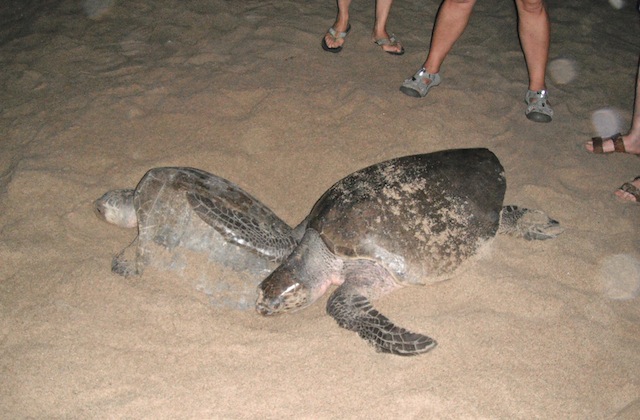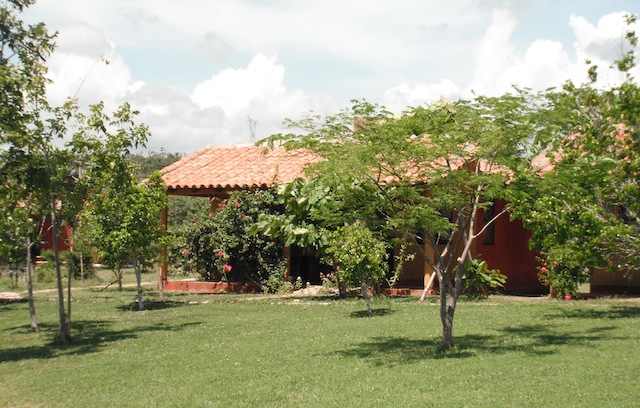What’s With the Olive Ridley?
Sea turtles aren’t exactly cute like deer or pandas, but for coldblooded reptiles they are certainly heart warming. If you are fortunate enough to witness an “arribada” (arrival), you will see hundreds of these large, ungainly creatures scuttle at top turtle speed out of the surf and on to the beach, sometimes to a good distance from the water. These female turtles (the males never leave the ocean) rapidly dig deep holes where they lay around 100 eggs - one at time. Then they cover up the hole and make a mad dash back into the ocean. The process only takes an hour.
The olive ridley marine turtles, to give it its proper name, live in the ocean where sharks are their only predators. But between July and December the females return to the beach where they hatched to lay their eggs. Hundreds or thousands will assemble for days in the waves just off shore and then, receiving some mysterious signal – usually on a night without a moon - make a mad scramble on to the sand. Forty-five days later the eggs will hatch. Although some olive ridleys lay their eggs in solitary places, most join the arribada.
Fifty years ago, arribadas occurred all over the Mexico’s Pacific Coast; now because of coastal development and the wholesale slaughter of the olive ridley sea turtle, they only occur in one place: the Escobilla turtle sanctuary, a half an hour south-east of Puerto Escondido.
From 1960-1990, the turtle slaughterhouse and processing plant in San Agustinillo, next to Mazunte, provided much of the world’s turtle skin for boots and purses and turtle shell for combs and eyeglass frames, not to mention meat and eggs for the Mexican market. In those days Mazunte was famous for its stench of rotting turtle carcasses.
Sea turtles had been protected by various international treaties since 1973 and were listed as an endangered species by the U.S. Endangered Species Act in 1978, but it wasn’t until 1990 that Mexico banned the killing of marine turtles and the collection of their eggs.
Escobilla was declared a turtle sanctuary in 2002 and the beach is protected by soldiers. Visitors must be accompanied by licensed sanctuary guides.
Today turtles are still being slaughtered in Oaxaca; there is a black market for turtle eggs, which are considered an aphrodisiac, and for turtle meat. But thanks to eco-tourism, keeping turtles alive and well has become an economic asset, and San Agustinillo and Mazunte are now known for their beautiful beaches and many fine hotels and restaurants, while Escobilla offers tourists cabins and camping sites.
The Escobilla is a licensed eco-tourism cooperative operated by members of the local community. The restaurant is open from 8 a.m. to 6 p.m. Monday through Saturday, and there are comfortable new cabins. Activities include nature walks and canoe tours of its mangrove lagoon. The center is located on the side of the Coastal Highway at the 181 km point. You can get there by any Pochutla bus.
It’s not possible to plan for an arribada, because of the unpredictable nature of the turtles, but if you are at the sanctuary when one occurs, you can be driven to the beach by a licensed guide.














